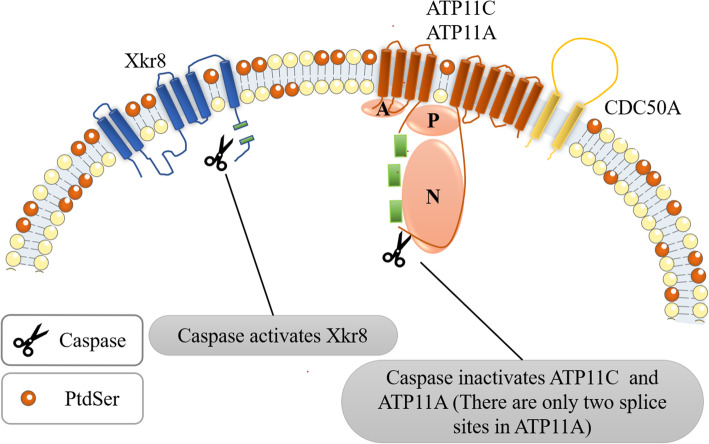Fig. 2.
The process of phosphatidylserine exposure on the surface of apoptotic cells. This figure schematically shows the structure of caspase-dependent scramblase Xkr8 and flippase (ATP11A /ATP11C related to CDC50A). When cell apoptosis occurs, caspase 3 or caspase 7 cleaves Xkr8 to activate its scramblase activity [20, 21]. Meanwhile, caspase 3 or caspase 7 cleaves ATP11A and ATP11C to inactivate their flippase activity, resulting in the loss of lipid asymmetry and PtdSer exposure. Then the macrophages will engulf the apoptotic cells. This form of PtdSer exposure is irreversible [22]

